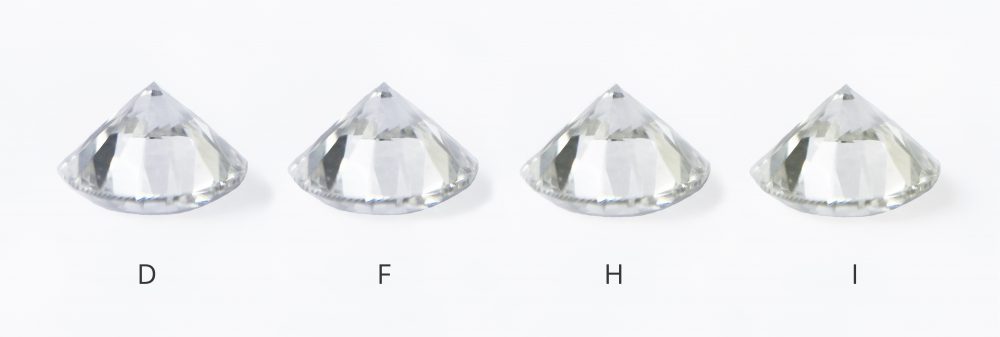A diamond engagement ring, crafted especially for you.
design your ownBrowse our engagement rings
Use the filters below to browse our engagement ring collection.
the science of diamonds
Diamonds are formed under high temperature and pressure conditions around 100 miles beneath the earth’s surface. As the only gem made of a single element, carbon, the crystal structure of a diamond is isometric, which means that the carbon atoms are bonded in the same way in all directions making the diamond so visually extraordinary.
Eventually, the diamonds are ejected towards the earth’s surface to be unearthed by miners. It is then cleaved, cut, and polished to its perfect state ready to be sold.

Diamond history
A diamond engagement ring is considered an iconic symbol of love and unity in 20th and 21st century Western civilisation.
Diamonds were first found in South Africa in the mid-19th century but a diamond engagement ring was often considered exclusively for the social elite until the 20th century.
Following the Great Depression of the 1930s, the price of diamonds collapsed while market research indicated that traditional plain metal engagement rings were going out of style. In 1947, De Beers ran a marketing campaign that dramatically impacted the engagement ring industry. They introduced their slogan “a diamond is forever” and with that, the iconic diamond engagement ring was born and universally understood as an indispensable choice to show a couple’s commitment.
With such a wide selection of diamond colours and shapes as well as engagement ring styles, each diamond engagement ring can look remarkably different to the next. From the classic round diamond to the incredibly unique hexagonal cut diamond, there’s a shape to suit every taste.
Every diamond should be the perfect balance between the 4 Cs, carat weight, cut, color and clarity.
The 4 Cs of diamond quality
A diamond’s overall aesthetic is determined by a combination of their four quality characteristics, known as the 4 Cs (cut, clarity, color and carat weight).
Cut
Cut grades are given only to round diamonds. A diamond’s cut refers to the balance of proportions achieved by the diamond cutter, not the diamond’s shape.
Ranging from excellent to poor, cut grade combines three different types of reflections–brilliance, fire and scintillation. For the greatest brilliance and fire, we recommend (and typically only offer) ‘very good’ and ‘excellent’ cut grades for round diamonds.
Over 92% of our customers choose an excellent cut grade round diamond.

Clarity
While diamonds are forming deep in the earth, they develop natural birthmarks – slight irregularities and features that are visible to a skilled grader under 10x magnification. These are collectively known as “clarity characteristics”.
Depending on the size, quantity, placement, tone or colour of these characteristics, they may or may not be visible to the naked eye. This is one of the reasons why a truly flawless diamond is so rare, but that doesn’t mean you can’t find a diamond that appears flawless to the naked eye.
To ensure the brilliance and fire that makes diamonds so enchanting, we offer ‘SI1” clarity grades or higher. Each diamond is inspected to ensure that any clarity characteristics shouldn’t be visible to the naked eye and your diamond will achieve the greatest light performance and brightest sparkle.
The most frequently selected clarity grade is VS1, closely followed by VVS2, VS2 and VVS1. Each of these clarity grades are excellent choices that are eye clean, meaning they won’t have inclusions visible to the naked eye.

Colour
The most popular diamond color is F. This is closely followed by E color and G color. E and F colors are in the colorless category while G is in the near colorless category – all diamonds in the colorless and near colorless category would appear bright and white in appearance.

Carat weight
Before grams and ounces, diamonds were weighed using carobs, a long green bean with seeds inside. The beans were nearly identical in size, making them ideal for Mediterranean traders to use when weighing gemstones. One seed equalled one carob, which is likely where the term carat originates.
Carat is often confused with the size of a diamond even though it’s a unit that actually measures weight. Today, one carat is equal to 0.2 grams.
Larger diamonds are more rare, and more heavy, which increases their price. Though price increases aren’t steady, they exponentially increase with carat weight. For example, a 1ct diamond would be valued higher than two 0.50ct diamonds of the same quality. In general, a diamond of double the weight can cost three to four times more.
Just because a diamond is bigger, doesn’t mean it’s better. The right diamond isn’t just based on one factor but a combination of all 4 Cs (, cut, clarity, color and carat weight). When choosing a diamond, focus on the quality that’s most important to you, then work to balance the remaining three for the perfect diamond engagement ring.

Diamond grading
The Gemological Institute of America is an international non-profit organisation dedicated to producing consistent, accurate and unbiased diamond grading reports. They’ve worked for decades to create a standardised grading system so that you can select a diamond without seeing it, yet still trust that you’re getting exactly what you chose.
Each diamond is graded twice, by different graders, to ensure they arrive at the same grading report. While there are other diamond grading laboratories available, diamonds graded by the GIA are certainly the most highly valued and respected in the industry. We use GIA graded diamonds as the centre stones for our diamond engagement rings, so that you can be certain of your diamond’s characteristics.
Celebrity diamond engagement rings
Although the engagement ring industry has seen emerging trends of coloured gemstones, diamond engagement rings are certainly still at the forefront of the market. Celebrities such as Blake Lively, Ciara and Pippa Middleton to name a few, have their left hands adorned with a stunning diamond engagement ring.









